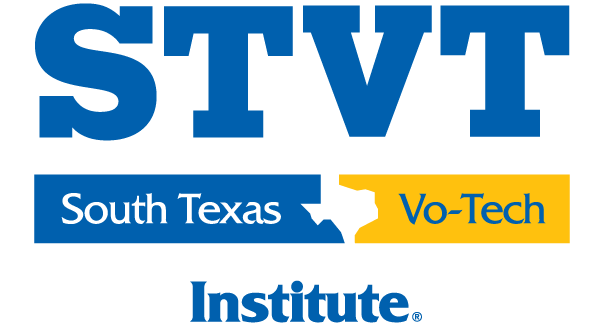Key Takeaways
- Welding can be learned by beginners with the right mix of hands-on training and guidance.
- Welding requires precision, safety awareness, and practice, but not prior experience.
- Most welding programs are designed to teach foundational skills efficiently and safely.
- Learning welding techniques may open doors to hands-on roles in various skilled trade careers
Welding is a skill that can seem intimidating at first, but for many students, it’s surprisingly approachable. The truth is: welding is not hard to learn if you’re committed, curious, and willing to practice. Like driving or cooking, it’s a hands-on trade where repetition builds confidence.
Is Welding Hard To Get Into?
Welding training programs may offer an approachable starting point for individuals interested in skilled trades, even those without prior experience. Many programs include hands-on practice, safety instruction, and guided learning to help students develop foundational skills.
You don’t need a college degree or years of experience to begin exploring welding. Some training programs are designed to help students prepare for industry-recognized certifications, such as OSHA or AWS, which may support entry into the field. For individuals seeking a shorter-term, skills-focused educational path, welding can be a practical option to consider.
What Are the Different Types of Welding and Which Ones Are Hardest to Learn?
Welding isn’t just one technique; it’s a collection of specialized processes, each with its own tools, materials, and learning curve. Whether you’re new to the trade or exploring career options, understanding the types of welding can help you decide where to start.
Here are the most common types of welding used in the industry today:
-
Shielded Metal Arc Welding (SMAW)
Also called “stick welding,” this beginner-friendly process uses a flux-coated rod (electrode) to create an arc with the base metal. It’s widely used in construction and fieldwork for its portability and durability.
-
Gas Metal Arc Welding (GMAW or MIG)
This process uses a continuous wire feed through a welding gun to create the arc. It’s one of the easiest types to learn and is popular in automotive and manufacturing applications.
-
Flux-Cored Arc Welding (FCAW)
Similar to MIG, this method uses a flux-filled wire, eliminating the need for a separate shielding gas. It’s ideal for outdoor welding or jobs with dirty or rusty metals.
-
Tungsten Inert Gas Welding (TIG)
This is a precision-based process using a non-consumable tungsten electrode and shielding gas. TIG offers clean, high-quality welds but is considered one of the most difficult techniques to master.
-
Oxy-Fuel Welding (OFW)
This traditional process uses a torch fueled by oxygen and a fuel gas (like acetylene) to create a high-heat flame. While less common today in industrial welding, it’s still used for repairs, cutting, and metal art.
What Makes Welding Easier or Harder To Learn?
The learning curve for welding depends on several key factors:
- Natural Aptitude: If you’re comfortable working with your hands and have good spatial awareness, you may pick it up faster.
- Practice Time: Welding is a hands-on skill. The more time you spend practicing, the faster your technique and consistency can improve.
- Instruction Quality: Learning from experienced instructors who teach safety, technique, and troubleshooting can make a huge difference.
- Welding Type: Some techniques are easier than others. MIG and stick welding are typically beginner-friendly. TIG is more advanced.
- Metal Type: Metals like stainless steel, aluminum, and mild steel all behave differently under heat, each with unique challenges.
How Welding Programs Help You Succeed
A structured welding program makes all the difference. Instead of guessing how to strike an arc, you’ll:
- Practice on real equipment under expert guidance
- Can learn safety protocols step-by-step
- Get exposure to multiple welding techniques like MIG, TIG, and Stick
- Work in a safe, supervised shop environment
Schools like STVT are designed for beginners, meaning you don’t need any prior trade experience to get started. Financial aid is available for those who qualify
What Skills Help You Learn Welding Faster?
You don’t need to be naturally “good with your hands” to potentially learn welding, but these skills can help:
- Attention to detail: Precision matters
- Patience: You’ll make mistakes (everyone does)
- Comfort with physical work: Welding can be active and hot
- Spatial awareness: Understanding angles and movement helps
These are all skills you can build during your training, not prerequisites.
Job Outlook for Welders
According to the Bureau of Labor Statistics, welding jobs are projected to grow steadily through 2033, with over 45,800 job openings expected annually. Potential advancement opportunities exist in pipe welding, inspection, and fabrication.
How Long Does It Take to Learn Welding?
Most students complete foundational welding programs in as little as 7–12 months, depending on the structure of the program. Many finish with a certification that can help them:
- Qualify for entry-level welding roles
- Apply for apprenticeships or advanced certifications
- Get hired faster with industry-recognized training
Why STVT Is a Strong Choice for Welding Students
At STVT, the welding program is designed with hands-on learners in mind. You can gain real experience with the tools, safety gear, and techniques used in the field. Instructors guide you through each step so you can build confidence as you go. Plus, STVT offers career support to help connect you with employers once you graduate.
FAQs About Learning Welding
Q: Is welding hard for someone with no experience?
A: Not at all. Most welding students start with zero experience. A good training program is designed to teach you from the ground up.
Q: What’s the hardest part of welding to learn?
A: Controlling the torch and mastering the technique takes the most time. But with consistent practice, your control can improve quickly.
Q: Can I learn welding online?
A: Theory can be taught online, but hands-on experience is essential. STVT and similar schools offer shop training that can build real-world confidence.
Q: Do I need math skills for welding?
A: Basic math (fractions, angles, measurements) is useful, but advanced algebra isn’t necessary. You can be taught what you need during training.
Next steps
Welding is a valuable skill that can open up many career opportunities. Welders can work in various industries, including construction, manufacturing, and automotive. Additionally, welding can be a rewarding hobby that allows you to create unique projects and perform repairs.
So, is welding hard to learn? It can be challenging, but it’s definitely achievable. With the right mindset and approach, you can learn the art of welding and unlock a world of possibilities.
If you’d like to learn welding, South Texas Vocational Institute’s Combination Welding program may be the right fit for you. Learn more about the program today by calling 866-480-9766 or submit this form today.
Disclaimers: Information within this blog is for general information purposes only. South Texas Vocational Technical Institute does not assume or guarantee certification/licensures, specific job/career positions, income earning potential, or salary expectations based on the programs offered at South Texas Vocational Technical Institute. Career and program information statements in this blog do not guarantee that programs or other information mentioned are offered at South Texas Vocational Technical Institute.


